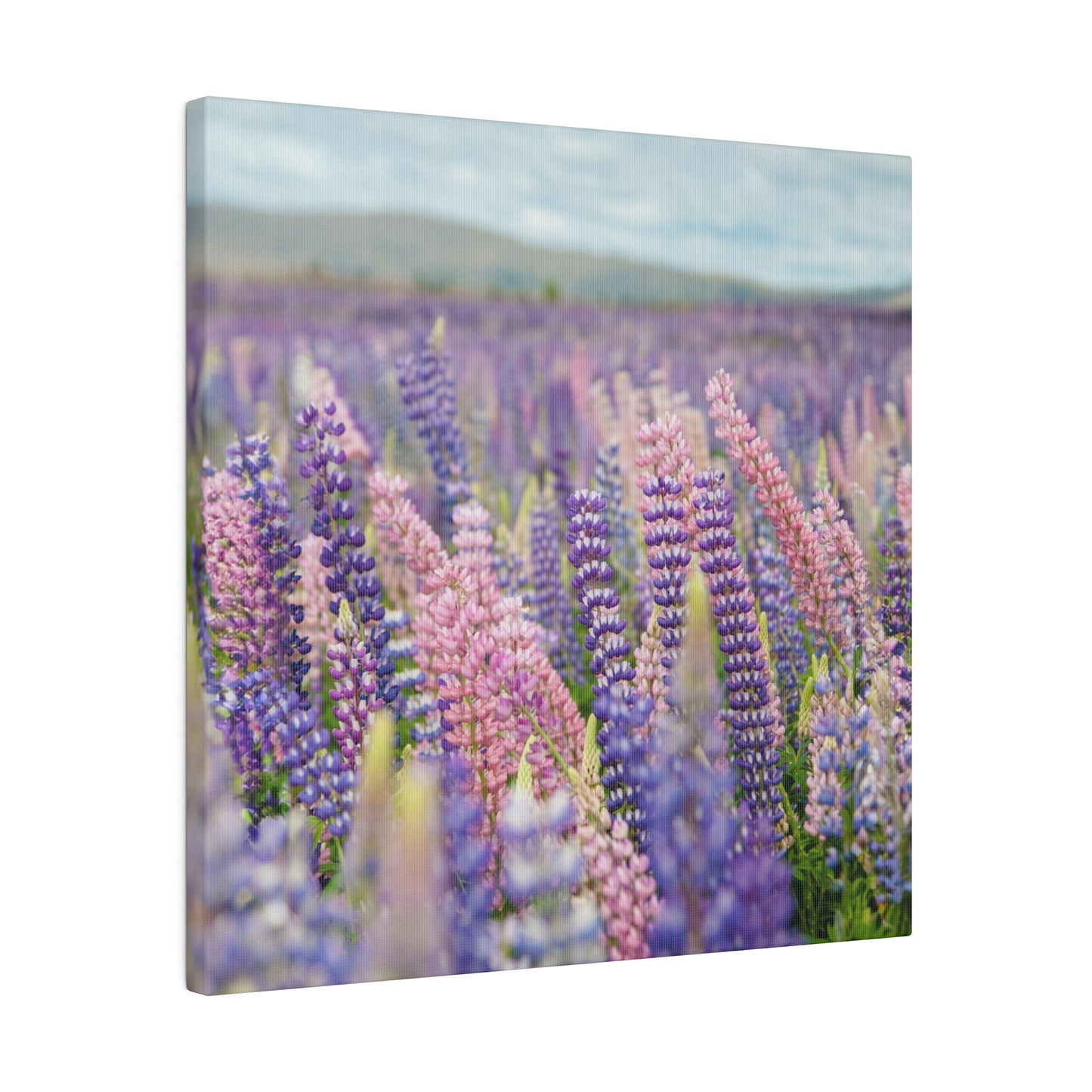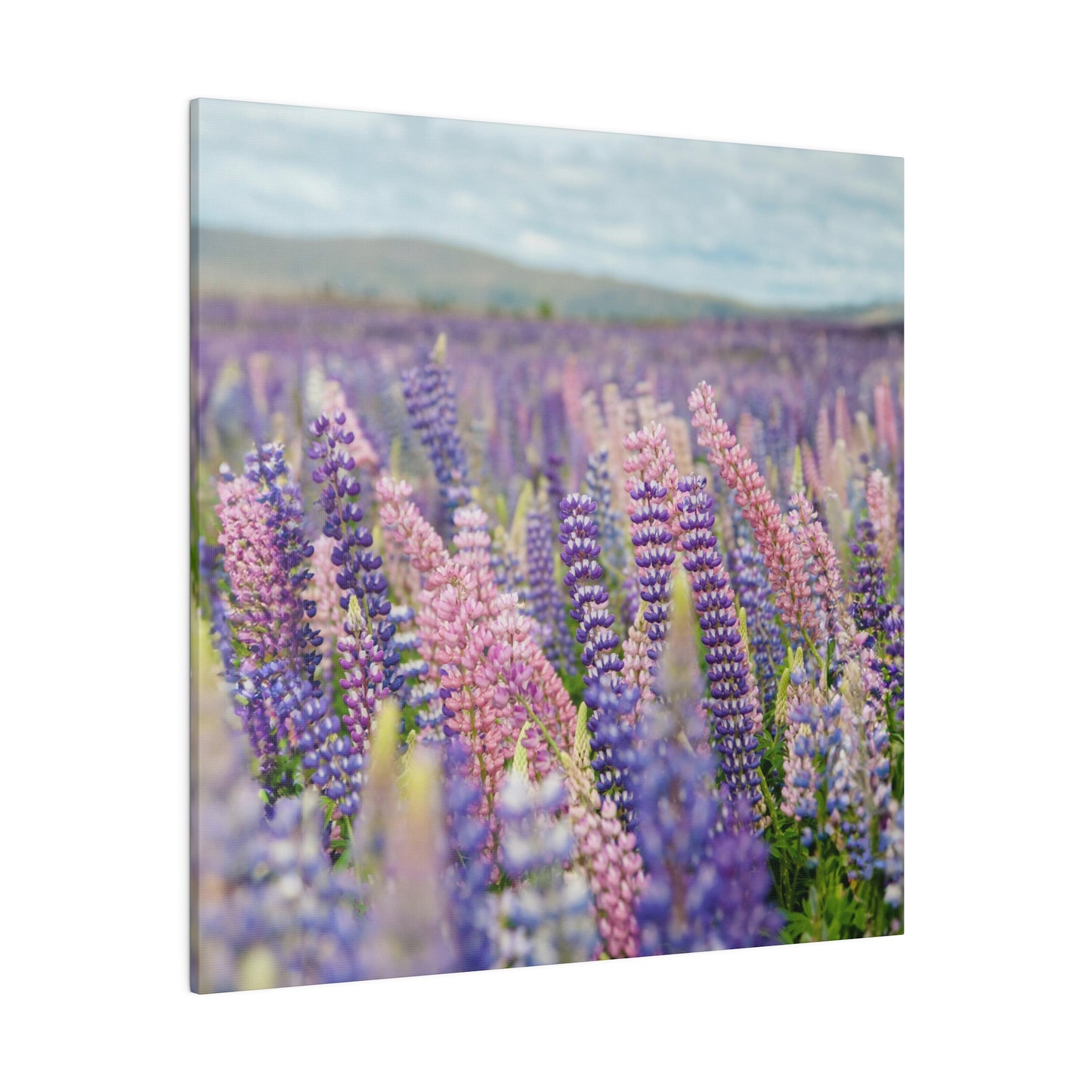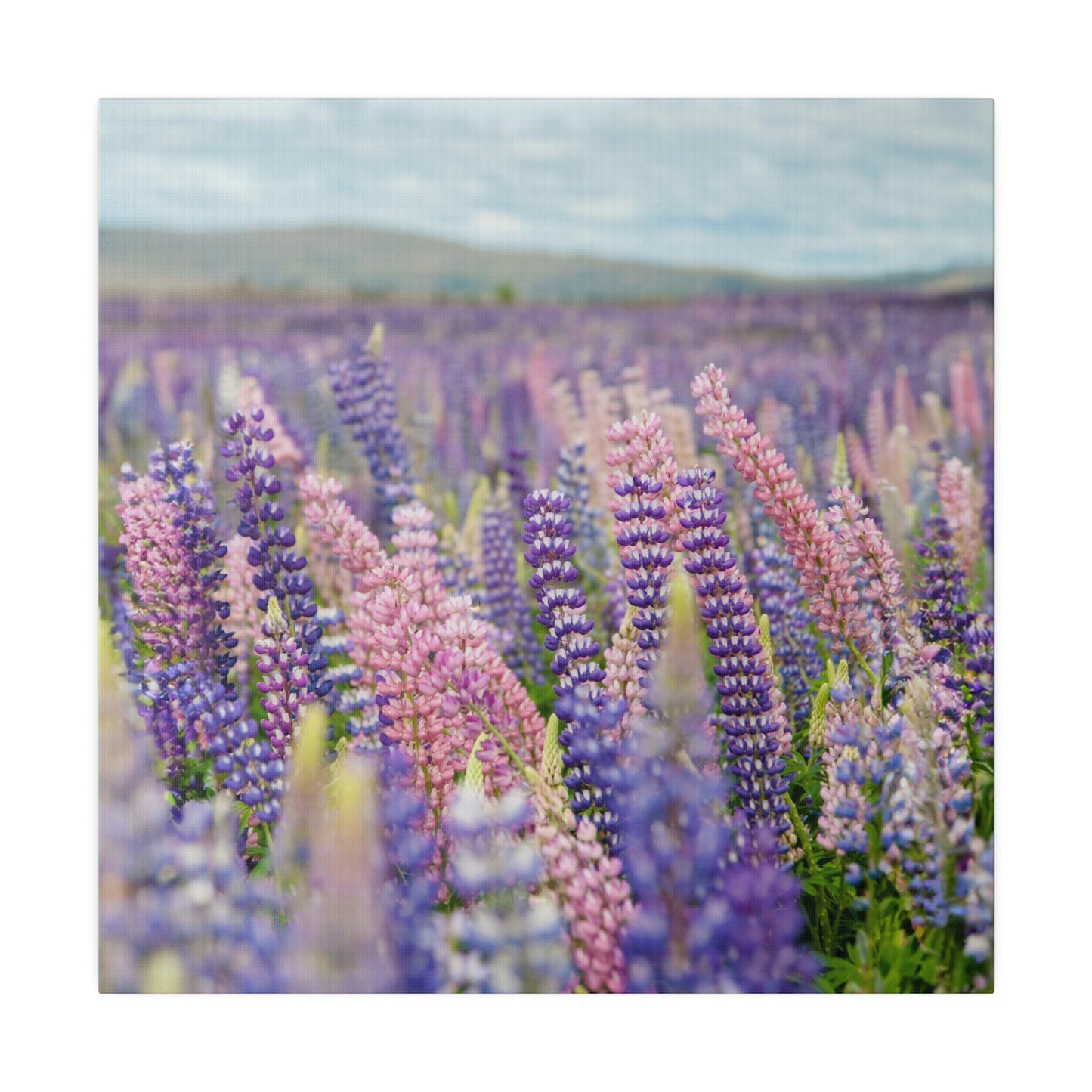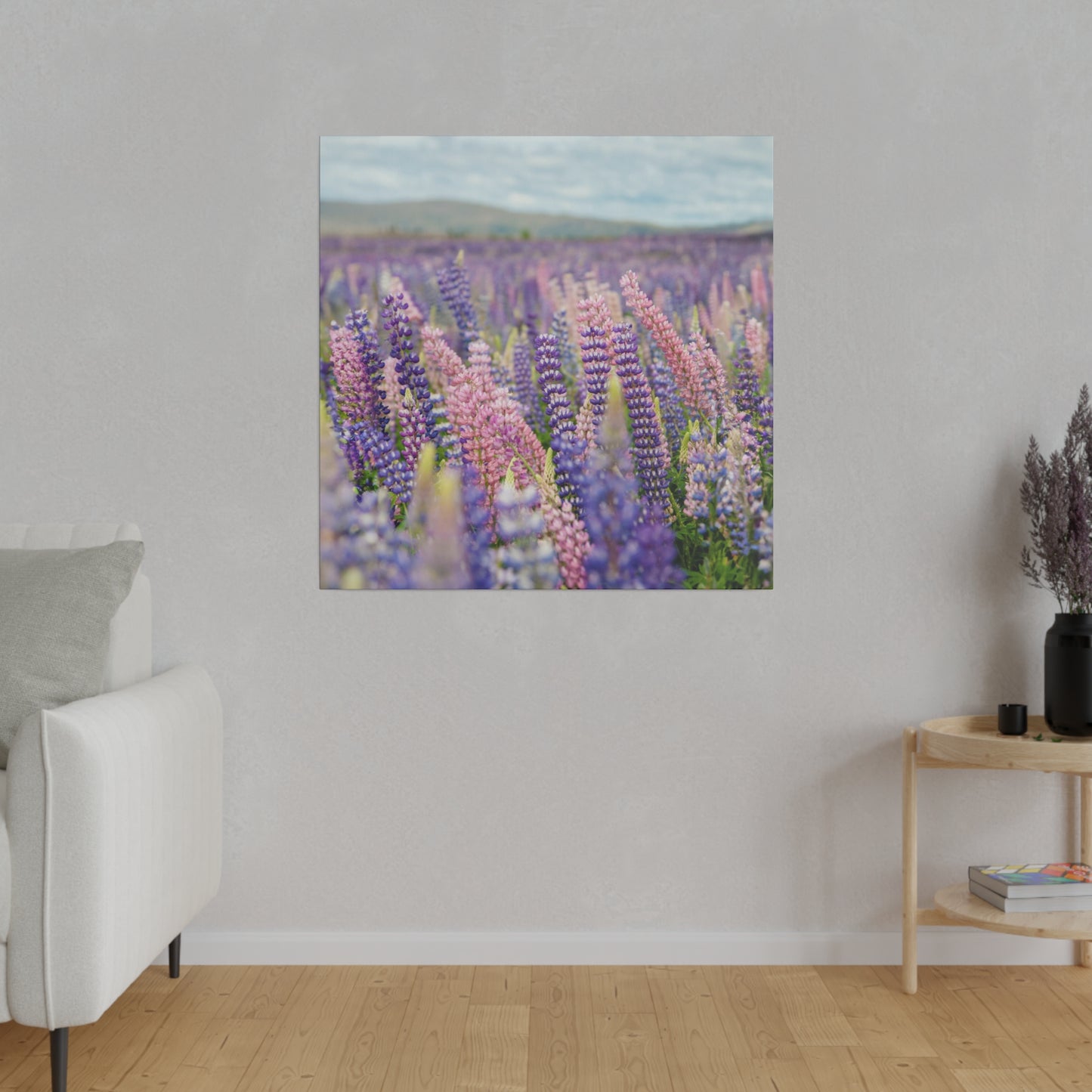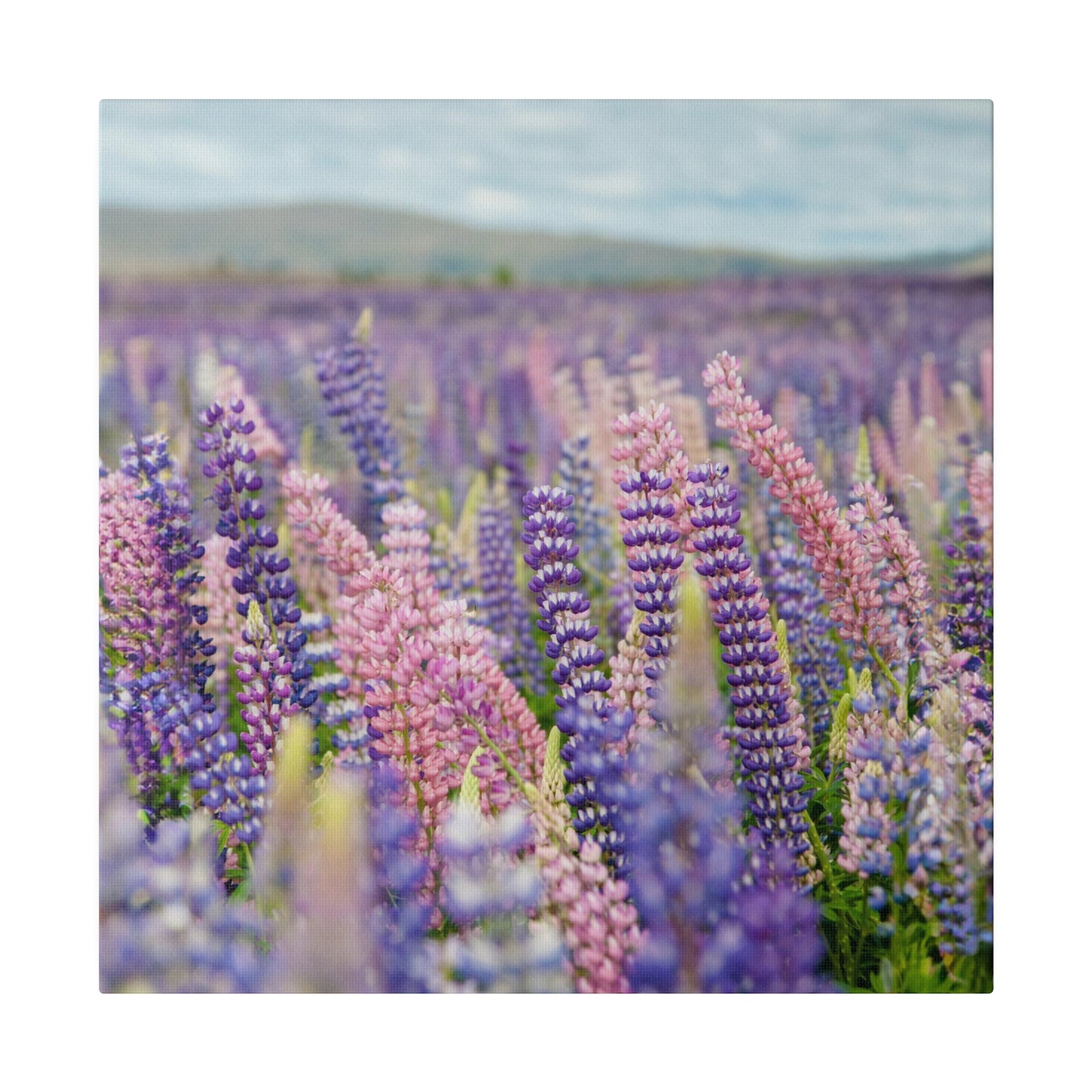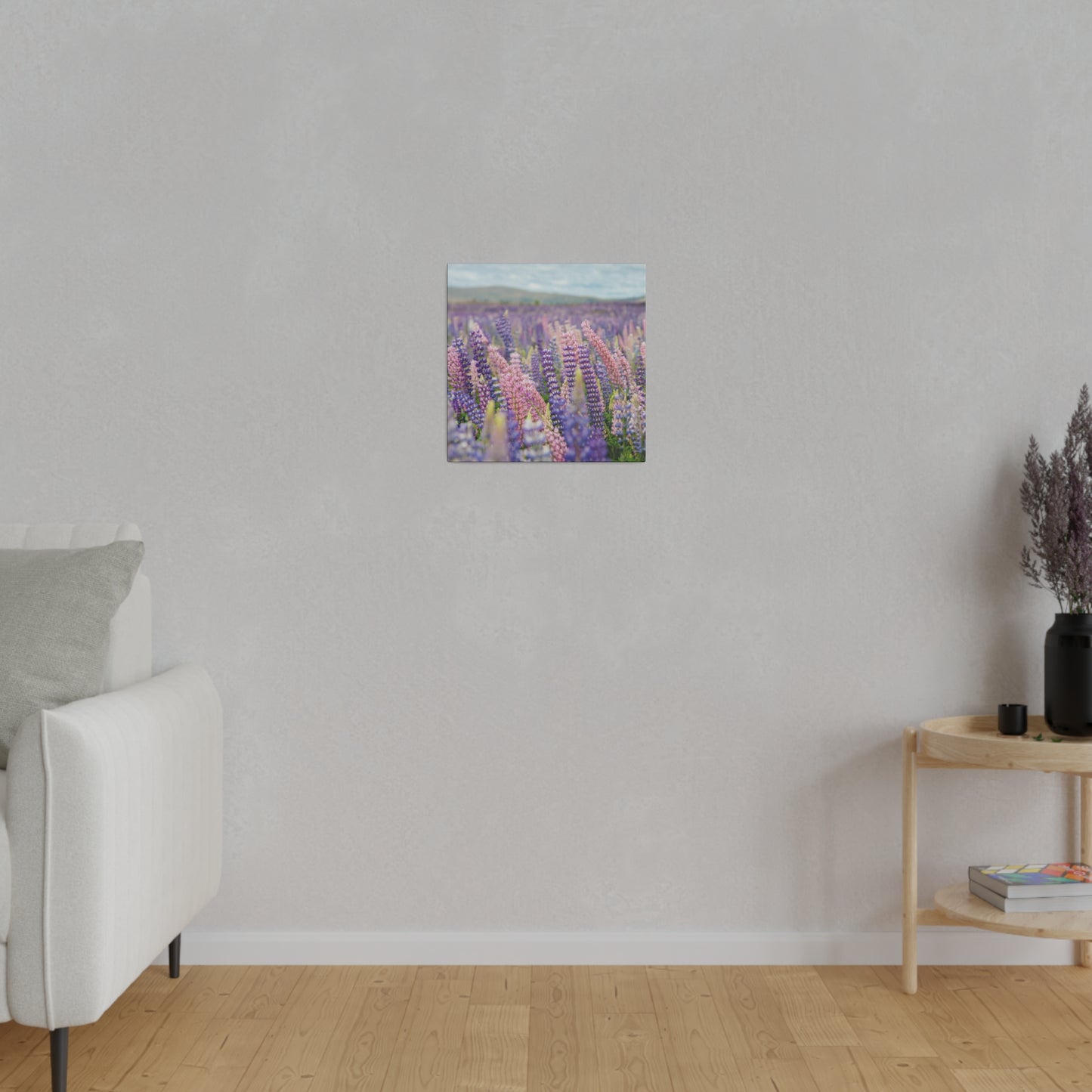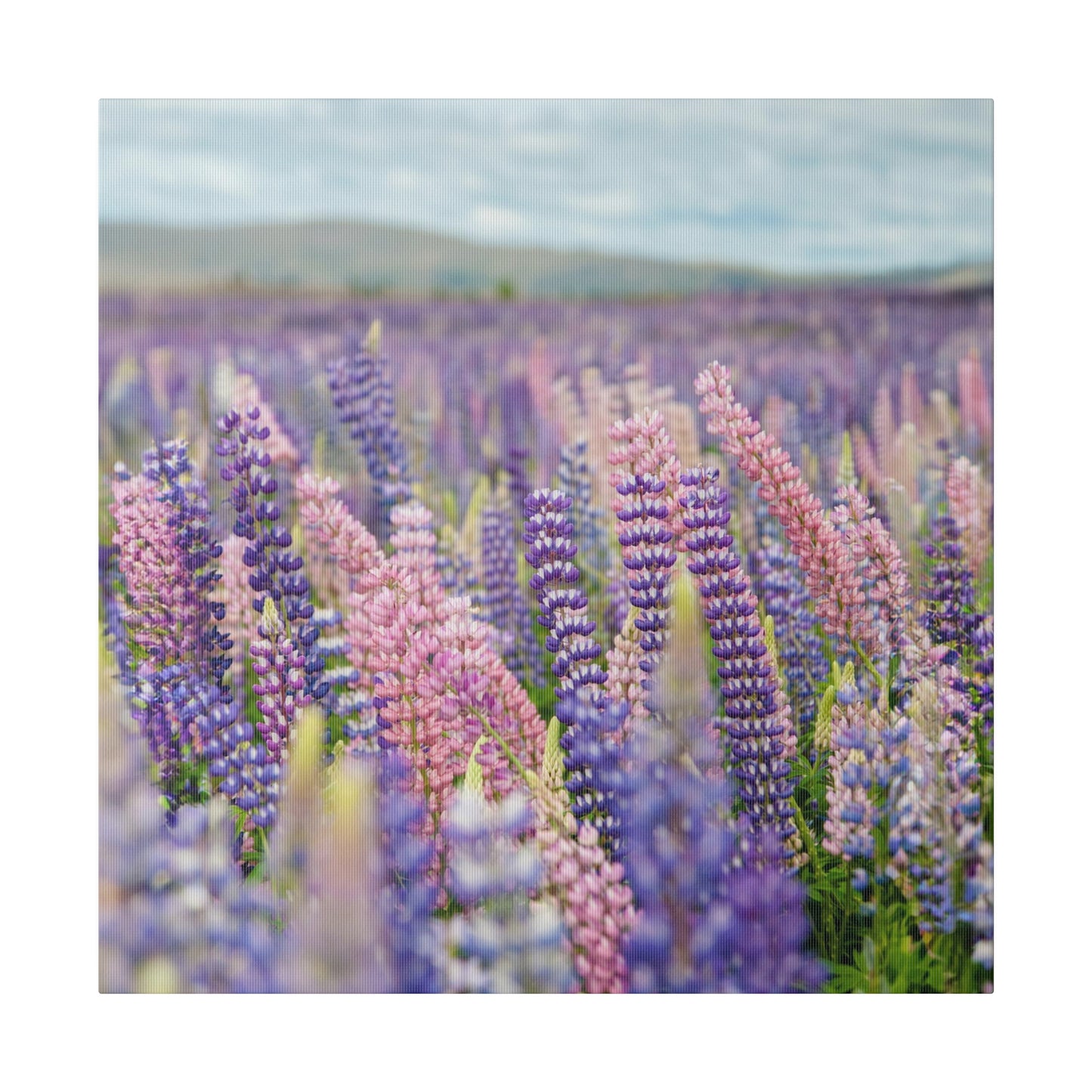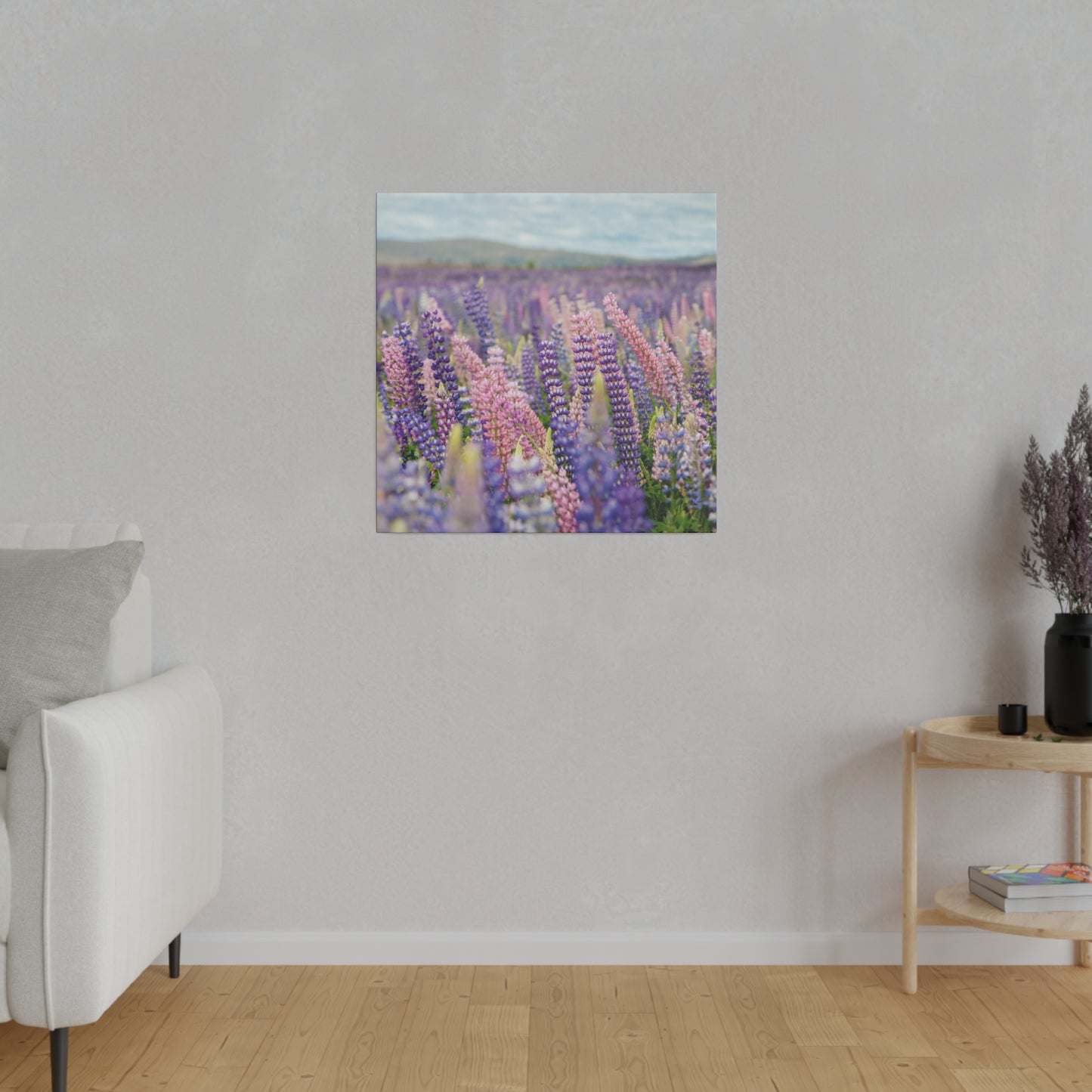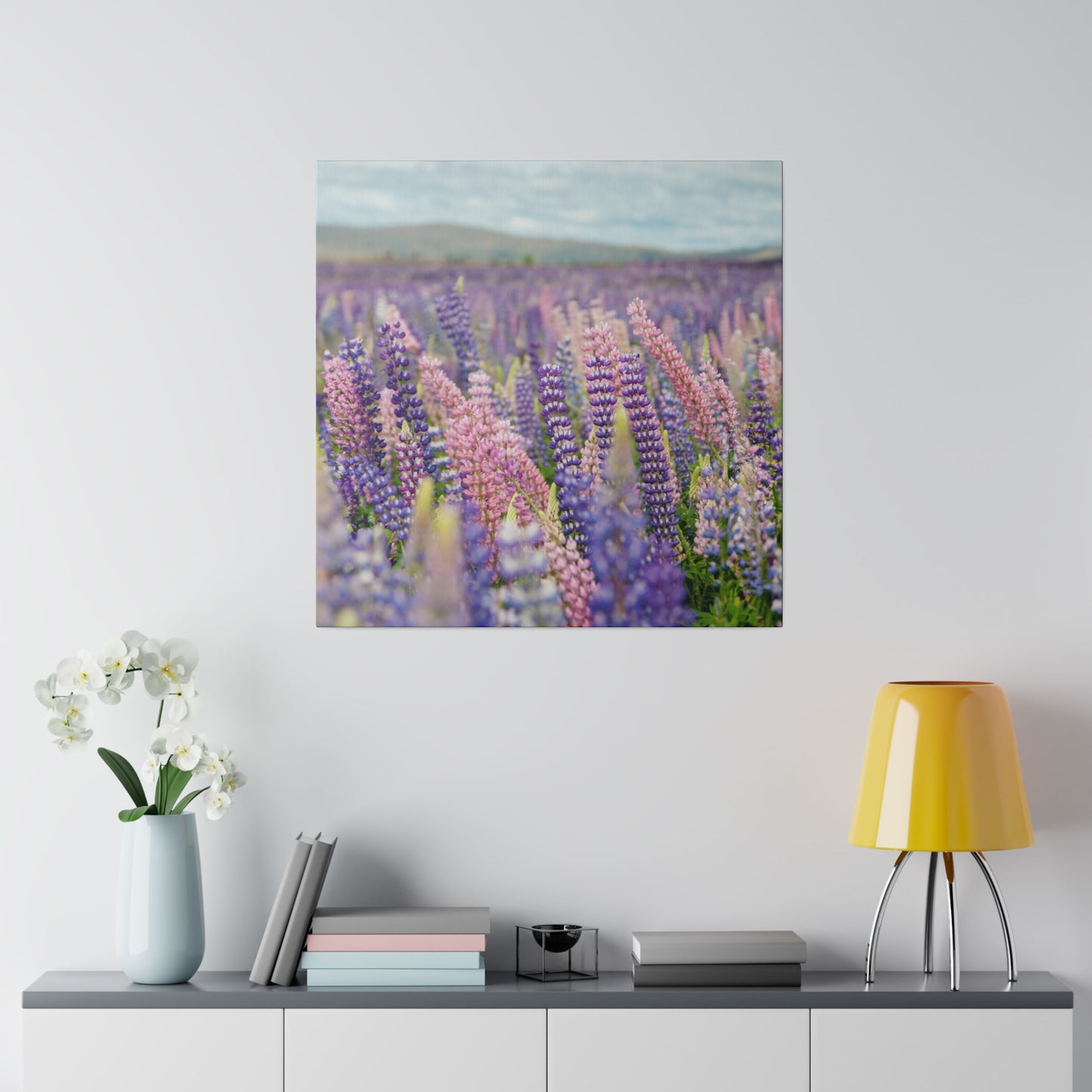Lavender Flower Wall Art: Embracing Nature's Purple Symphony in Your Home
The enchanting world of lavender wall art offers homeowners an extraordinary opportunity to infuse their living environments with the serene beauty and therapeutic qualities of one of nature's most beloved flowering plants. From the rolling purple fields of Provence to the delicate watercolor illustrations adorning modern homes, lavender-themed artwork has emerged as a sophisticated choice for those seeking to create tranquil, aesthetically pleasing environments that celebrate both natural beauty and artistic expression.
This comprehensive exploration delves into the multifaceted world of lavender-inspired wall art, examining everything from the psychological benefits of incorporating these soothing purple hues into your home to the various artistic styles and mediums available for displaying lavender's timeless appeal. Whether you're drawn to photographic prints of sprawling lavender fields, hand-painted watercolor illustrations, or contemporary abstract interpretations of this aromatic herb, understanding the diverse applications and benefits of lavender wall art will help you make informed decisions about incorporating these stunning pieces into your home décor strategy.
The Tranquil Essence of Lavender's Natural Beauty
Lavender's reputation as nature's most calming flower extends far beyond its aromatic properties, making it an exceptional subject for wall art that aims to create peaceful, restorative environments within the home. The visual appeal of lavender stems from its unique combination of soft purple hues, delicate flower spikes, and graceful silvery-green foliage that creates a harmonious color palette naturally pleasing to the human eye. This inherent visual harmony makes lavender wall art particularly effective at establishing a sense of balance and tranquility in any room where it's displayed.
The psychological impact of viewing lavender imagery has been documented in numerous studies focusing on color therapy and environmental psychology. Purple tones, particularly the soft lavender shades found in these flowering plants, have been shown to reduce stress hormones, lower blood pressure, and promote feelings of relaxation and mental clarity. When incorporated into wall art, these benefits become part of your daily visual environment, creating subtle but meaningful improvements to your overall well-being and quality of life.
The natural beauty of lavender also lies in its seasonal versatility and timeless appeal. Unlike trendy color schemes that may feel dated after a few years, lavender's connection to nature ensures that artwork featuring this beloved plant remains relevant and appealing across different decorating trends and personal style evolutions. The flower's association with both rustic country charm and sophisticated modern aesthetics makes it remarkably adaptable to various decorating approaches, from farmhouse chic to contemporary minimalism.
Furthermore, lavender's visual characteristics offer excellent photographic and artistic opportunities. The way morning light filters through lavender fields, creating dramatic shadows and highlighting the texture of individual flower spikes, provides artists and photographers with endless inspiration for creating compelling wall art. The plant's tendency to grow in neat, orderly rows creates natural leading lines that draw the viewer's eye through the composition, while the varying heights and densities of flower clusters add visual interest and depth to artistic representations.
Symbolic Meanings Behind Lavender Flower Imagery
The rich symbolic heritage of lavender flowers adds layers of meaning and emotional resonance to wall art featuring these beloved blooms, making such pieces not merely decorative elements but meaningful expressions of personal values and aspirations. Throughout history, lavender has been associated with purity, devotion, serenity, grace, and calmness, making it an ideal choice for creating artwork that communicates these positive qualities to both residents and visitors.
In ancient Roman culture, lavender was prized for its cleansing properties and was often used in bathing rituals, leading to its association with purification and spiritual cleansing. This historical connection makes lavender wall art particularly appropriate for bathrooms, bedrooms, and meditation areas where the symbolic emphasis on cleanliness and spiritual renewal resonates with the room's primary functions. The flower's connection to purification extends beyond the physical realm to encompass emotional and mental clarity, making lavender imagery especially meaningful for those seeking to create environments that support personal growth and self-reflection.
The symbolic association between lavender and devotion stems from various cultural traditions and religious practices where the flower has been used to represent faithful love, commitment, and spiritual dedication. This makes lavender wall art particularly meaningful in bedrooms, where it can serve as a subtle reminder of romantic commitment, or in family areas where it represents the devotion family members share for one another. The enduring nature of dried lavender, which retains its fragrance and much of its visual appeal long after harvesting, further reinforces these themes of lasting commitment and enduring love.
Lavender's reputation as a symbol of peace and tranquility has deep roots in folk traditions and modern aromatherapy practices alike. The flower's well-documented calming effects have led to its adoption as a universal symbol of serenity and relaxation. Wall art featuring lavender imagery can therefore serve as visual reminders to slow down, breathe deeply, and embrace moments of peace throughout busy daily routines. This symbolic association makes lavender artwork particularly valuable in high-stress environments or areas of the home dedicated to relaxation and unwinding.
The graceful appearance of lavender flowers, with their delicate spikes and soft coloring, has also led to their association with elegance, refinement, and feminine beauty. However, this association is balanced by the plant's hardy, practical nature and its historical use in various household applications, preventing lavender symbolism from becoming overly precious or impractical. This balance between beauty and utility reflected in lavender's symbolic meaning makes it an excellent choice for creating wall art that feels both sophisticated and approachable.
Incorporating Lavender Elements in Home Environments
Successfully incorporating lavender-themed wall art into home environments requires thoughtful consideration of how these pieces will interact with existing décor elements, lighting conditions, and the overall aesthetic goals of each individual room. The versatility of lavender as a decorative motif allows for numerous approaches to integration, from subtle accent pieces that add gentle color touches to bold statement walls that make lavender imagery the focal point of an entire room's design scheme.
When planning the incorporation of lavender wall art, consider the existing color palette of your target room and how lavender's natural purple tones will complement or enhance these established colors. Lavender pairs beautifully with neutral tones such as cream, ivory, soft gray, and warm white, creating elegant, sophisticated color schemes that feel both calming and refined. The flower's natural green foliage also creates opportunities for incorporating other natural green elements, such as potted plants, green textiles, or nature-inspired accessories that reinforce the botanical theme.
The scale and proportion of lavender wall art pieces should be carefully matched to the room's dimensions and architectural features. Large photographic prints of lavender fields work exceptionally well in spacious rooms with high ceilings, where they can create dramatic focal points without overwhelming the available wall area. Smaller lavender illustrations or watercolor prints are better suited to intimate rooms or areas where multiple pieces will be grouped together to create gallery-style displays.
Lighting plays a crucial role in how lavender wall art will appear and function within your home environment. Natural light tends to enhance the subtle color variations within lavender imagery, making pieces appear more vibrant and alive during daylight hours. However, consideration should also be given to how artificial lighting will affect these pieces during evening hours. Warm-toned LED lighting tends to complement lavender's purple hues better than cool fluorescent lighting, which can make purple tones appear washed out or artificially blue.
The placement of lavender wall art within a room should take into account both visual impact and practical considerations. Pieces placed at eye level create the most immediate visual impact and are most easily appreciated by viewers. However, lavender's calming qualities make it particularly effective when placed in areas where people will be seated or reclining, such as above sofas, beds, or reading nooks, where the soothing imagery can be enjoyed during moments of rest and relaxation.
Capturing Lavender Fields in Full Bloom
The spectacular visual drama of lavender fields in full bloom provides some of the most compelling subject matter for wall art, offering viewers an opportunity to bring the expansive beauty of these purple landscapes into their homes regardless of geographic location or season. Photographic and painted representations of blooming lavender fields capture not only the visual splendor of these agricultural landscapes but also the sense of abundance, natural rhythm, and seasonal celebration that these environments embody.
Professional photographers specializing in lavender field imagery often focus on capturing the interplay between the orderly rows of cultivated lavender plants and the natural, organic growth patterns of individual bushes within those rows. This contrast between human agricultural planning and natural plant behavior creates visual tension that makes field photographs particularly engaging and dynamic. The repetitive pattern of lavender rows creates strong compositional lines that can make rooms appear larger and more organized, while the organic variation within each row prevents the overall effect from becoming monotonous or overly structured.
The seasonal timing of lavender blooms creates unique opportunities for wall art that celebrates specific moments in the agricultural calendar. Early bloom photographs capture the fresh, vibrant purple of newly opened flowers against the bright green of spring foliage, while late-season images may show the deeper, more muted tones of mature blooms mixed with the beginning stages of natural drying. These seasonal variations allow homeowners to select lavender field artwork that reflects their personal preferences for color intensity and seasonal association.
Weather conditions during lavender bloom season can dramatically affect the mood and visual impact of field photographs. Images captured during golden hour lighting create warm, romantic atmospheres perfect for bedrooms and intimate seating areas, while photographs taken during overcast conditions may emphasize the cool purple tones and create more contemplative, peaceful moods suitable for reading areas or meditation rooms. Storm photographs showing lavender fields beneath dramatic skies can create powerful, dynamic wall art suitable for larger rooms where bold visual statements are desired.
The perspective chosen for lavender field photography significantly impacts how the resulting wall art will function within a home environment. Wide-angle shots that capture the full expanse of lavender fields work well in large rooms where they can create the illusion of expanded outdoor views, while close-up perspectives that focus on the texture and detail of individual flower clusters are better suited to smaller rooms where intimate, detailed imagery is more appropriate to the scale of the environment.
Therapeutic Properties of Lavender in Visual Art
The well-documented therapeutic properties of lavender extend beyond its aromatic qualities to encompass the psychological and emotional benefits of viewing lavender imagery, making wall art featuring this beloved plant a valuable tool for creating healing, restorative home environments. Scientific research in the field of color therapy has consistently demonstrated that exposure to lavender's characteristic purple hues can trigger measurable physiological responses, including reduced heart rate, lowered blood pressure, and decreased levels of stress-related hormones.
The therapeutic value of lavender wall art is particularly pronounced when pieces are strategically placed in areas of the home where relaxation and stress relief are primary goals. Bedrooms benefit enormously from lavender imagery, as the calming visual cues can help prepare the mind and body for restful sleep. The association between lavender and sleep quality is well-established in both traditional folk medicine and modern clinical studies, making lavender wall art a natural choice for creating bedroom environments that support healthy sleep patterns and nighttime relaxation routines.
Bathrooms represent another ideal location for therapeutic lavender wall art, as the historical association between lavender and cleansing rituals creates psychological connections between the visual imagery and the restorative activities that typically occur in bathroom environments. The calming effects of lavender imagery can help transform utilitarian bathroom activities into more mindful, relaxing experiences, while the flower's association with cleanliness and purification reinforces the psychological satisfaction derived from personal hygiene routines.
Home office and study areas can also benefit significantly from the stress-reducing properties of lavender wall art. The modern work-from-home environment often creates high-stress situations where visual cues for relaxation and mental clarity become particularly valuable. Lavender imagery can serve as visual reminders to take breathing breaks, practice mindfulness, and maintain perspective during challenging work periods. The flower's association with mental clarity and focus, derived from aromatherapy traditions, makes lavender wall art especially appropriate for areas where concentration and creative thinking are priorities.
The therapeutic benefits of lavender wall art extend to social areas of the home as well, where the calming influence of lavender imagery can help create more peaceful, harmonious environments for family interactions and social gatherings. Living rooms and dining areas featuring lavender artwork often feel more welcoming and relaxed, encouraging meaningful conversations and reducing the social tensions that can arise in busy household environments.
Rustic Charm of Dried Lavender Decorations
The enduring appeal of dried lavender as a decorative element offers unique opportunities for creating wall art that celebrates both the natural beauty of the fresh flower and the rustic, time-honored tradition of preserving seasonal abundance for year-round enjoyment. Dried lavender's muted color palette, interesting textural qualities, and association with traditional craftsmanship make it an excellent subject for wall art that emphasizes authenticity, sustainability, and connection to historical decorating traditions.
Dried lavender bundles, or "lavender wands" as they're traditionally known, create compelling subjects for both photographic and painted wall art that celebrates the intersection between functional craft and aesthetic beauty. These carefully constructed bundles represent centuries of tradition in lavender cultivation and preservation, making artwork featuring dried lavender bundles particularly meaningful for homeowners who value craftsmanship, tradition, and sustainable living practices. The visual appeal of these bundles lies in their combination of organic form and human skill, creating compositions that feel both natural and purposeful.
The color evolution that occurs as lavender flowers dry creates unique artistic opportunities for wall art that explores themes of time, change, and natural cycles. Fresh lavender's vibrant purples gradually fade to soft lavenders, dusty roses, and eventually warm grays and browns, creating a natural ombré effect that many artists find compelling for both realistic and abstract interpretations. This color transition can be particularly effective in wall art designed for rooms where the passage of time and seasonal change are celebrated, such as kitchens where seasonal cooking is emphasized or sunrooms where the changing seasons are closely observed.
The textural qualities of dried lavender offer rich opportunities for creating wall art that engages multiple senses, even when experienced purely visually. The way dried lavender stems catch and reflect light differently than fresh stems creates visual interest and depth, while the slightly twisted and weathered appearance of dried flower heads adds character and storytelling potential to artistic compositions. Macro photography of dried lavender can reveal intricate details and textures that create surprisingly complex and engaging wall art pieces.
Rustic presentation methods for dried lavender wall art can include arrangements displayed in vintage baskets, hung from weathered wooden beams, or arranged against textured backgrounds that emphasize the organic, handmade qualities of dried flower preservation. These presentation approaches work particularly well in homes with farmhouse, cottage, or country decorating themes, where the rustic qualities of dried lavender complement other natural materials and traditional craft elements.
French Countryside Artistic Traditions
The artistic traditions of the French countryside, particularly those emerging from the lavender-growing regions of Provence, have created a rich vocabulary of visual motifs and stylistic approaches that continue to influence contemporary lavender wall art. These traditions, rooted in centuries of agricultural practice and regional artistic development, offer sophisticated frameworks for creating wall art that celebrates both the natural beauty of lavender and the cultural heritage of its cultivation and artistic representation.
Provençal artistic traditions typically emphasize the integration of lavender imagery with other elements of the Mediterranean landscape, creating compositions that place lavender fields within broader contexts of rolling hills, ancient stone buildings, cypress trees, and olive groves. This holistic approach to landscape representation creates wall art that tells complete stories about place, culture, and the relationship between human activity and natural beauty. Such comprehensive landscape approaches work particularly well in larger wall art pieces where there's sufficient visual real estate to develop complex, layered compositions.
The color palettes traditionally associated with French countryside lavender art tend toward muted, sophisticated tones that reflect both the natural colors of the Provençal landscape and the influence of French artistic movements such as Impressionism and Post-Impressionism. These palettes typically feature warm grays, dusty purples, golden yellows, and sage greens that create harmonious color relationships while avoiding the overly bright or artificial colors sometimes found in commercial lavender imagery. This sophisticated color approach makes French countryside-inspired lavender art particularly suitable for homes with refined, understated decorating aesthetics.
Traditional French artistic techniques for representing lavender include both plein air painting methods that capture the immediate visual experience of lavender fields and studio-based approaches that allow for more detailed, contemplative interpretations of lavender subjects. The plein air tradition, with its emphasis on direct observation and spontaneous brushwork, creates lavender art with fresh, immediate qualities that can bring energy and life to home environments. Studio-based approaches tend to produce more carefully considered compositions with sophisticated color relationships and detailed execution that reward close viewing and contemplation.
The influence of French artistic movements on contemporary lavender wall art extends beyond purely visual considerations to encompass philosophical approaches to the relationship between art and daily life. The French tradition of integrating beautiful objects and artistic elements into everyday home environments provides a cultural framework for understanding lavender wall art not as purely decorative elements but as meaningful contributors to quality of life and aesthetic satisfaction in domestic settings.
Purple Elegance and Lavender Design Themes
The inherent elegance of purple as a color family, combined with lavender's specific associations with refinement and sophisticated natural beauty, creates opportunities for developing wall art themes that emphasize luxury, grace, and timeless aesthetic appeal. Purple's historical association with royalty and nobility provides a rich cultural context for lavender wall art that aims to create environments with sophisticated, elevated atmospheres while maintaining the approachable, natural qualities that make lavender universally appealing.
The spectrum of purple tones available within lavender imagery allows for sophisticated monochromatic color schemes that create depth and visual interest without relying on contrasting colors. From the pale, almost white lavender of early morning photographs to the deep, rich purples of late-season blooms, this natural color range provides sufficient variation for creating complex, nuanced wall art compositions. Monochromatic lavender schemes work particularly well in bedrooms and bathrooms where calm, unified color approaches support relaxation and serenity goals.
Lavender's natural pairing with silver and gray tones creates opportunities for wall art themes that emphasize cool, sophisticated color relationships. The silvery-gray foliage of lavender plants provides natural bridge colors that allow lavender purple to integrate seamlessly with modern gray-based decorating schemes, while the flower's occasional white varieties offer opportunities for creating high-contrast compositions with dramatic visual impact. These cool-toned lavender themes work exceptionally well in contemporary homes where clean lines and sophisticated color relationships are prioritized.
The seasonal variations in lavender's appearance provide opportunities for creating wall art themes that explore different expressions of purple elegance throughout the year. Spring lavender imagery tends toward fresh, bright purples with green undertones, while summer pieces may emphasize the full, saturated purples of peak bloom. Autumn lavender art can explore the muted purples and browns of late-season flowers, while winter pieces might focus on the architectural qualities of bare lavender stems against snowy or frost-covered landscapes.
Combining lavender imagery with other elements traditionally associated with elegance and refinement can create wall art themes suitable for formal areas of the home. Lavender paired with antique silver vessels, elegant garden furniture, or architectural elements from grand estates creates compositions that emphasize both natural beauty and cultivated sophistication. These more formal approaches to lavender wall art work particularly well in dining rooms, entrance halls, and other areas where creating impressive, welcoming first impressions is important.
Photographic Techniques for Lavender Bouquets
The art of photographing lavender bouquets for wall art purposes requires specialized techniques that capture both the delicate beauty of individual flowers and the overall composition and visual impact of arranged blooms. Professional photographers working with lavender bouquets must consider factors such as lighting, background selection, depth of field, and composition to create images that translate effectively into home wall art applications while maintaining the natural beauty and emotional appeal of fresh lavender arrangements.
Lighting techniques for lavender bouquet photography often emphasize soft, diffused illumination that highlights the delicate texture of lavender flowers without creating harsh shadows or overly bright highlights. Natural window light, particularly during the golden hours of early morning or late afternoon, provides ideal conditions for capturing the subtle color variations within lavender blooms while maintaining the soft, romantic quality that makes lavender bouquets appealing as home décor subjects. Artificial lighting setups for studio lavender photography typically employ large softboxes or umbrellas to recreate the gentle, even illumination of natural diffused light.
Background selection for lavender bouquet photography significantly impacts how the resulting images will function as wall art within home environments. Neutral backgrounds in soft whites, creams, or pale grays allow lavender's natural colors to take center stage while ensuring that the resulting artwork will integrate easily with various home decorating schemes. Textured backgrounds, such as aged wood, vintage fabrics, or stone surfaces, can add visual interest and storytelling elements to lavender bouquet photographs while reinforcing rustic or country decorating themes.
Depth of field considerations in lavender bouquet photography involve balancing the desire to show sharp detail in the flowers with the need to create pleasing background blur that eliminates distracting elements. Shallow depth of field techniques can create dreamy, romantic effects that emphasize the ethereal qualities of lavender blooms, while deeper focus approaches may be necessary when the bouquet arrangement itself is complex and all elements need to remain clearly visible. The choice between these approaches depends on the intended use of the final photograph and the aesthetic goals of the specific wall art application.
Compositional techniques for lavender bouquet photography often employ classical artistic principles such as the rule of thirds, leading lines, and balanced asymmetry to create images that are both visually pleasing and suitable for long-term display in home environments. The natural tendency of lavender stems to create graceful curved lines can be emphasized through careful positioning and camera angle selection, while the repetitive nature of individual flower clusters provides opportunities for creating rhythmic patterns within the overall composition.
Symbolic Representations of Peace Through Lavender
The universal recognition of lavender as a symbol of peace and tranquility provides rich opportunities for creating wall art that communicates these important values while adding natural beauty to home environments. The historical and cultural associations between lavender and peaceful states of mind extend across numerous civilizations and time periods, making lavender imagery particularly effective for creating artwork that resonates with viewers on both conscious and subconscious levels.
The visual characteristics that make lavender symbolic of peace include the flower's soft, gentle appearance, its harmonious color relationships, and its tendency to grow in orderly, non-aggressive patterns that suggest balance and natural order. These visual qualities translate effectively into wall art compositions that can help create peaceful atmospheres in home environments where stress reduction and emotional balance are prioritized. The gentle swaying motion of lavender flowers in natural settings also contributes to their peaceful associations, and this sense of gentle movement can be captured in both photographic and painted representations.
Religious and spiritual traditions from around the world have incorporated lavender symbolism into their practices and artistic expressions, creating a rich cultural context for lavender wall art that explores themes of peace, meditation, and spiritual reflection. Christian traditions have long associated lavender with purity and devotion, while Eastern spiritual practices have embraced lavender's calming properties for meditation and mindfulness exercises. This cross-cultural spiritual significance makes lavender wall art particularly appropriate for meditation rooms, prayer areas, and other spaces dedicated to spiritual practice and reflection.
The peace symbolism of lavender extends to its role in conflict resolution and emotional healing practices. Aromatherapy traditions have documented lavender's effectiveness in reducing anxiety, anger, and emotional turbulence, making visual representations of lavender equally valuable for creating environments that support emotional healing and peaceful relationships. Wall art featuring lavender can serve as visual reminders to approach conflicts with calm consideration and to prioritize peaceful resolution over confrontational approaches.
Contemporary peace movements and environmental activism have also adopted lavender symbolism, recognizing the flower's associations with natural harmony, sustainable agriculture, and the peaceful coexistence of human activity with natural systems. This modern interpretation of lavender's peaceful symbolism makes lavender wall art particularly relevant for environmentally conscious homeowners who wish to express their values through their home decorating choices while creating aesthetically pleasing and emotionally supportive living environments.
Seasonal Variations in Lavender Artwork
The natural seasonal cycle of lavender growth, bloom, and dormancy provides rich inspiration for wall art that celebrates the changing rhythms of the natural world while offering homeowners opportunities to refresh their decorative environments throughout the year. Understanding and appreciating these seasonal variations allows for more sophisticated approaches to lavender wall art that can enhance the connection between indoor living environments and the natural world beyond the home's walls.
Spring lavender artwork typically focuses on the emergence of new growth, with fresh green foliage and the first hints of developing flower buds creating compositions that emphasize renewal, hope, and the anticipation of beautiful things to come. Early spring lavender imagery often features the contrast between the hardy, persistent woody stems that have survived winter and the tender new growth that promises the spectacular blooms of the coming season. This seasonal theme works particularly well in areas of the home associated with new beginnings, such as home offices where new projects are launched or children's rooms where growth and development are celebrated.
Summer lavender art celebrates the peak blooming season when lavender fields reach their maximum visual impact and aromatic intensity. Summer imagery typically features fully developed flower spikes in their most vibrant purple tones, often captured during the golden hour lighting that emphasizes the warm, abundant feeling of peak growing season. The abundance and vitality expressed in summer lavender art makes it particularly suitable for social areas of the home where energy, celebration, and shared enjoyment are emphasized.
Autumn lavender artwork explores the transition from peak bloom to the beginning of the drying process, often featuring the muted purple tones and slightly weathered appearance that characterizes late-season lavender. The combination of fading flowers and persistent aromatic qualities that marks autumn lavender creates opportunities for artwork that explores themes of maturity, lasting value, and the beauty found in natural aging processes. This seasonal approach to lavender art works well in spaces associated with reflection and contemplation, such as reading areas or meditation rooms.
Winter lavender art presents unique opportunities for exploring the architectural and structural qualities of lavender plants after the flowers have faded and dropped. The bare stems and persistent foliage create interesting geometric patterns and sculptural forms that can be particularly striking when contrasted with snow, frost, or winter light conditions. Winter lavender artwork often emphasizes endurance, persistence, and the quiet beauty found in dormant but living natural systems, making it appropriate for spaces where patience and long-term thinking are valued.
Minimalist Applications of Lavender Themes
The clean, simple aesthetic of minimalist design philosophy finds natural compatibility with lavender themes, as the flower's inherent elegance and sophisticated color palette align perfectly with minimalism's emphasis on quality over quantity and the celebration of essential, beautiful elements. Minimalist lavender wall art focuses on distilling the essential visual and emotional qualities of lavender into compositions that maximize impact while minimizing visual complexity and decorative excess.
Minimalist approaches to lavender wall art often emphasize negative white surroundings that allow the natural beauty of lavender forms and colors to take center stage without competing elements or distracting backgrounds. This reductive approach creates artwork that functions as visual breathing room within otherwise busy living environments, providing calm focal points that support minimalism's goals of reducing visual clutter and promoting mental clarity. Large-scale photographs of single lavender stems or small clusters against pure white backgrounds exemplify this minimalist approach while maintaining the natural beauty that makes lavender appealing.
The color restraint inherent in minimalist design philosophy works particularly well with lavender's naturally sophisticated purple and green color palette. Minimalist lavender art typically limits itself to these natural colors, avoiding the addition of artificial or enhanced colors that might compromise the clean, uncluttered aesthetic that minimalism seeks to achieve. This color restraint creates opportunities for exploring subtle variations within lavender's natural color range, developing sophisticated monochromatic compositions that reward careful observation while maintaining overall visual simplicity.
Geometric interpretations of lavender forms can create minimalist wall art that captures the essential structural qualities of lavender plants while eliminating ornamental details that might distract from the pure appreciation of form and proportion. Simplified line drawings of lavender stems, abstracted representations of flower clusters, and geometric arrangements inspired by lavender field patterns can create wall art that satisfies minimalism's preference for clean lines and geometric clarity while maintaining recognizable connections to the natural world.
The integration of minimalist lavender wall art into contemporary home environments requires careful attention to scale, proportion, and placement to ensure that pieces function effectively within minimalist decorating schemes. Large-scale pieces with plenty of surrounding white backgrounds tend to work better than small, detailed images that might appear cluttered within minimalist settings. The placement of minimalist lavender art should emphasize clean sight lines and uncluttered visual relationships with furniture and architectural elements, supporting minimalism's goals of creating calm, organized living environments.
Watercolor Techniques for Lavender Flower Prints
The delicate, translucent qualities of watercolor paint create natural affinities with lavender subjects, as this medium's tendency toward soft edges, subtle color transitions, and organic texture variations mirrors many of the visual characteristics that make lavender flowers appealing. Professional artists working in watercolor have developed specific techniques for capturing lavender's distinctive appearance and emotional qualities, creating artwork that translates beautifully into home wall art applications.
The layering techniques fundamental to successful watercolor painting work particularly well for representing the complex color relationships found within lavender flowers and foliage. Individual lavender blooms contain multiple purple tones that shift from light to dark as they recede into the flower cluster, and watercolor's capacity for creating smooth gradations through successive transparent layers allows artists to capture these subtle color transitions realistically while maintaining the fresh, spontaneous quality that makes watercolor appealing for home decoration.
Wet-on-wet watercolor techniques, where paint is applied to damp paper or over existing wet paint layers, can create the soft, diffused effects that effectively represent lavender's delicate flower clusters and the atmospheric qualities often found in lavender field landscapes. This technique produces organic edge variations and unpredictable color blending that mirror the natural randomness found in real lavender growth patterns, creating artwork with authentic natural qualities that feel alive and dynamic rather than overly controlled or mechanical.
The transparency inherent in watercolor paint allows artists to create lavender representations that capture the translucent quality of fresh lavender petals when backlit by natural light. This transparency effect is particularly valuable for creating lavender wall art intended for rooms with significant natural light, as the painted transparency can echo and enhance the actual light conditions within the room. Layering transparent purple washes over underlying yellow or green tones can create the subtle color complexity that gives watercolor lavender paintings their distinctive luminous quality.
Negative painting techniques, where artists paint around shapes rather than filling them in, can be particularly effective for creating watercolor lavender art that emphasizes the plant's characteristic spiky flower forms. By painting the spaces between flower clusters and individual blooms, artists can create lavender representations that feel light and airy while maintaining clear definition of the plant's distinctive structural characteristics. This approach works especially well for creating minimalist watercolor lavender pieces that emphasize essential forms without excessive detail.
Color Palette Inspiration from Lavender Gardens
The natural color relationships found within lavender gardens provide rich inspiration for developing comprehensive home decorating schemes that extend far beyond individual wall art pieces to encompass entire room color palettes and coordinated decorating approaches. Professional color designers and home decorators frequently turn to lavender gardens as sources of sophisticated, naturally harmonious color combinations that create pleasing, balanced environments while maintaining connections to the natural world.
The primary purple tones found in lavender blooms range from pale, almost white lavenders to deep, saturated purples that approach violet, providing a complete spectrum of purple variations that can serve as the foundation for monochromatic decorating schemes or as accent colors within more complex color relationships. The natural variation within this purple range ensures that lavender-inspired color palettes never appear flat or monotonous, as the subtle differences between individual purple tones create depth and visual interest even within single-color approaches.
The silvery-green foliage of lavender plants introduces cool gray-green tones that provide perfect neutral balance for lavender's purple flowers, creating naturally harmonious color relationships that feel both sophisticated and accessible. These gray-green tones translate beautifully into wall colors, fabric choices, and decorative accessories that complement lavender wall art while extending the garden-inspired theme throughout entire rooms. The muted quality of lavender's foliage colors makes them particularly suitable for serving as background colors that allow purple accent pieces to take center stage.
Seasonal variations in lavender garden colors provide inspiration for decorating schemes that can evolve throughout the year while maintaining overall coherence and thematic consistency. Spring lavender gardens emphasize fresh greens and pale purples that inspire light, energetic color palettes perfect for bedrooms and bathrooms where freshness and cleanliness are prioritized. Summer color inspiration tends toward more saturated purples paired with deeper greens, creating richer, more dramatic color schemes suitable for living areas and dining rooms where warmth and vitality are desired.
The companion plants commonly found in lavender gardens offer additional color palette inspiration that can create more complex, layered decorating schemes while maintaining the natural harmony that makes lavender gardens so visually appealing. Traditional lavender garden companions include roses (adding pink tones), catmint (contributing additional purple variations), and various herbs with silver foliage (reinforcing the gray-green theme). These natural plant combinations provide roadmaps for creating home color palettes that feel both sophisticated and naturally evolved rather than artificially constructed.
Historical Significance of Lavender in Art
The long history of lavender cultivation and artistic representation provides rich cultural context for contemporary lavender wall art, connecting modern home decoration choices with centuries of artistic tradition and cultural significance. Understanding this historical background can enhance appreciation for lavender wall art while providing inspiration for selecting pieces that resonate with particular historical periods or artistic movements that align with personal aesthetic preferences.
Ancient civilizations, particularly the Romans and Egyptians, incorporated lavender into both daily life and artistic expression, recognizing the plant's value for its aromatic, medicinal, and symbolic properties. Roman frescoes and mosaics occasionally featured lavender among other garden plants, establishing early precedents for representing lavender in domestic decorative contexts. These ancient artistic traditions emphasize lavender's role in creating beautiful, pleasant living environments, a function that continues to make lavender wall art relevant for contemporary home decoration.
Medieval and Renaissance European art traditions frequently included lavender in religious and secular contexts, often as symbols of purity, devotion, and divine blessing. Illuminated manuscripts from this period sometimes feature lavender in border decorations and garden scenes, while panel paintings depicting religious figures occasionally include lavender plants as symbolic elements. The sophisticated artistic techniques developed during these periods for representing plant life continue to influence contemporary botanical art and provide inspiration for traditional approaches to lavender wall art.
The development of botanical illustration as a scientific and artistic discipline during the 17th and 18th centuries created some of the most detailed and accurate artistic representations of lavender ever produced. These scientific illustrations, with their emphasis on precise observation and careful documentation of plant characteristics, established standards for botanical accuracy that continue to influence contemporary lavender art. Modern wall art based on historical botanical illustration styles can bring scholarly sophistication and educational value to home environments while maintaining the aesthetic appeal that makes lavender attractive as a decorative subject.
Impressionist and Post-Impressionist painters of the late 19th and early 20th centuries found lavender fields to be compelling subjects for exploring light, color, and atmospheric effects. The regular patterns of lavender cultivation provided structured compositions that allowed these artists to experiment with color relationships and brushwork techniques while maintaining recognizable subject matter. The influence of these artistic movements continues to shape contemporary approaches to lavender landscape painting and provides stylistic inspiration for homeowners seeking lavender wall art with sophisticated artistic pedigrees.
Conclusion
Lavender flower wall art is more than a decorative choice—it's an invitation to embrace the peace, beauty, and timeless elegance that nature offers through one of its most beloved blooms. Known for its calming scent and soft, graceful appearance, lavender symbolizes serenity, healing, and purity. Bringing this "purple symphony" into your home through wall art transforms ordinary spaces into tranquil retreats filled with subtle charm and soothing energy.
Incorporating lavender-themed artwork allows homeowners to connect with nature in an intimate and intentional way. Whether showcased as a minimalist watercolor, a vintage botanical print, or a bold modern canvas, lavender art brings a gentle vibrancy to any room. The soft purples and greens found in these pieces offer a color palette that is both refreshing and restful, perfect for bedrooms, living rooms, bathrooms, or reading nooks where peace and comfort are essential.
Beyond its aesthetic appeal, lavender wall art also carries emotional and symbolic resonance. Lavender is often associated with relaxation, mindfulness, and spiritual calm. By surrounding yourself with this imagery, you invite those same qualities into your daily life—creating a space that nurtures not just the eye, but also the soul. It's a quiet reminder to breathe deeply, slow down, and find beauty in simplicity.
Additionally, lavender art pairs effortlessly with various interior design styles—from rustic farmhouse and French country to contemporary and minimalist. Its versatile nature makes it a thoughtful gift, a beautiful seasonal accent, or a year-round staple that never goes out of style.
In conclusion, lavender flower wall art is a celebration of nature’s quiet strength and delicate beauty. It speaks softly yet powerfully, turning your walls into canvases of calm and your home into a sanctuary of harmony. By embracing lavender in your décor, you infuse your environment with color, emotion, and meaning—creating not just a beautiful home, but a peaceful one. Let the purple symphony play on your walls and let its message of grace, renewal, and tranquility echo throughout every corner of your space.













